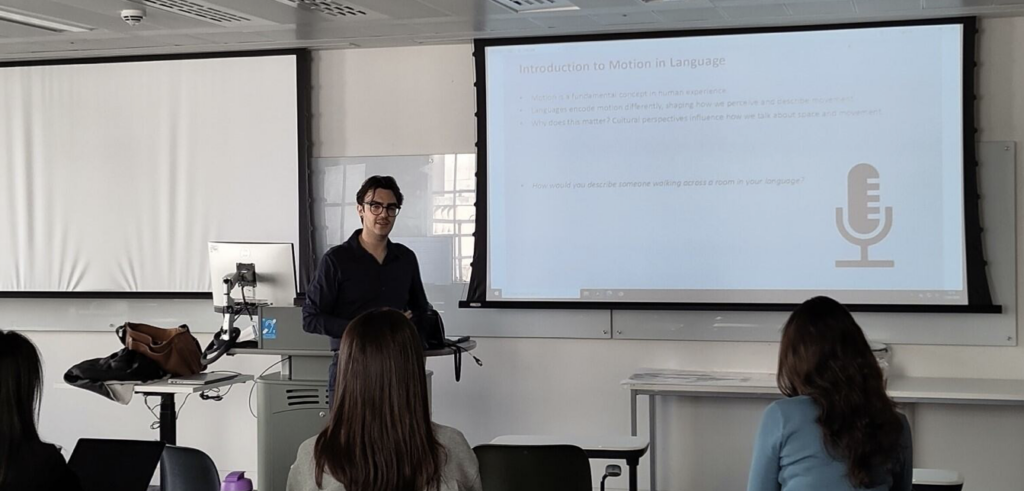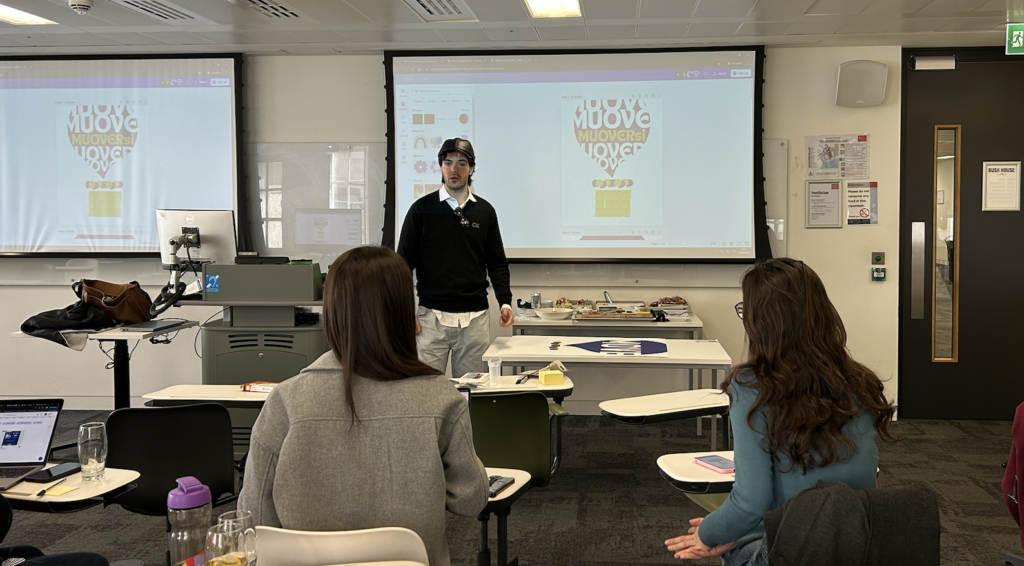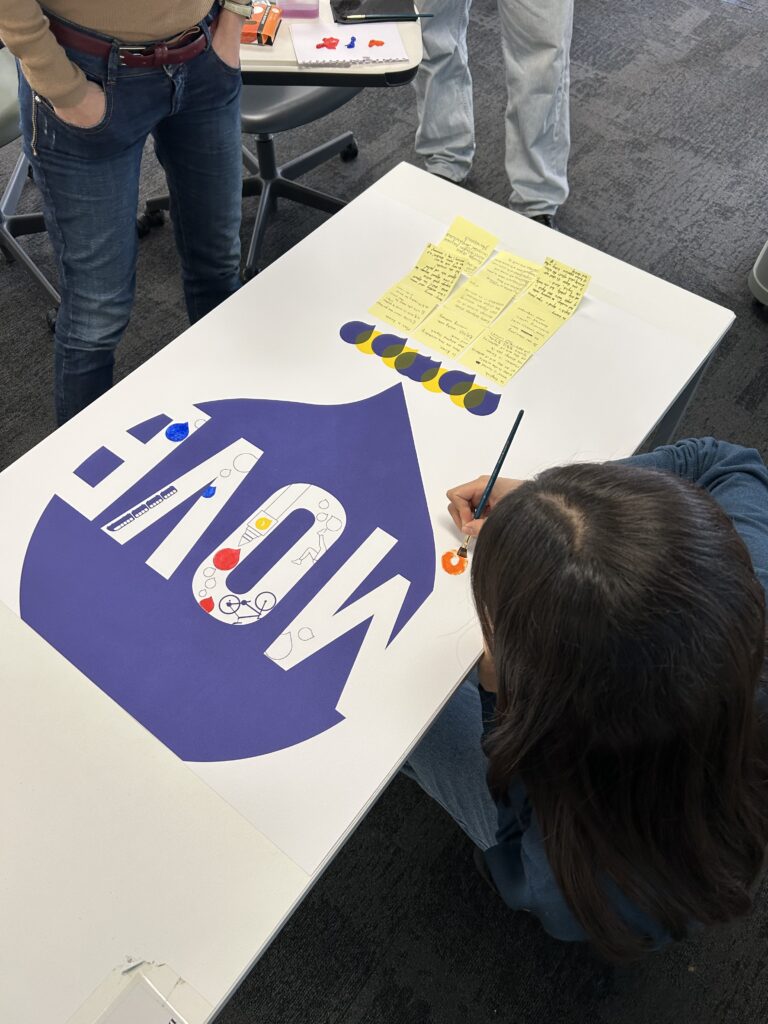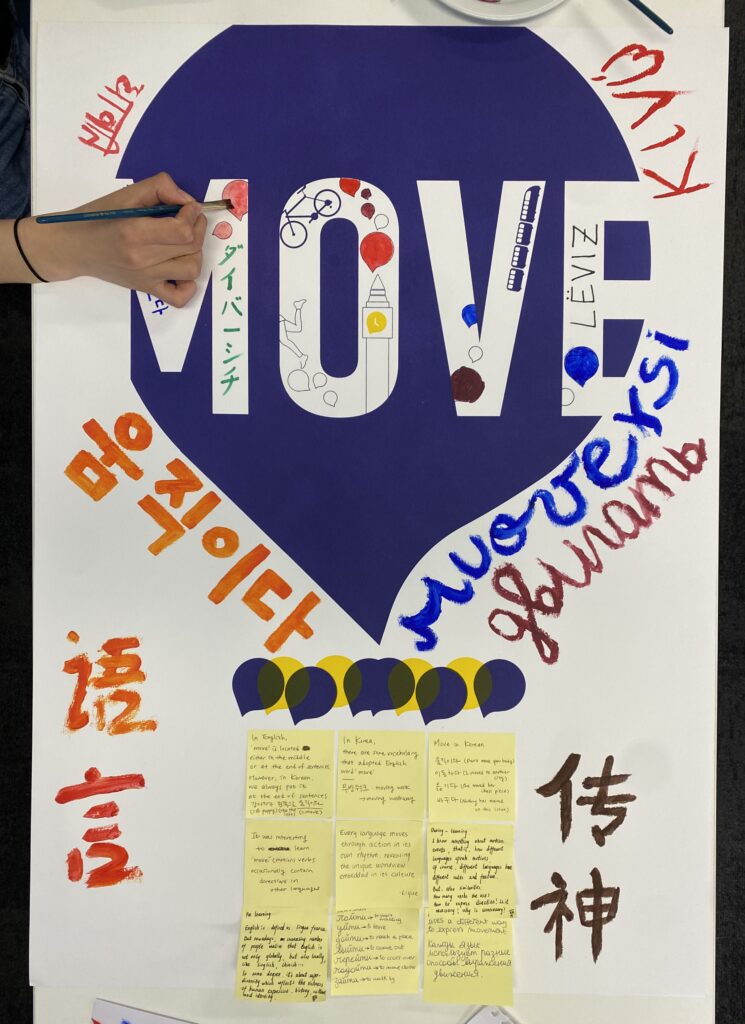On 31 March 2025, King’s College London hosted Crossing Boundaries: Celebrating Linguistic Diversity at King’s, a unique and vibrant event that brought together students from across the university to explore how languages shape our understanding of motion, space, and the world around us. This interdisciplinary initiative, funded by a Diversity & Inclusion Grant (£787.59) from the Faculty of Arts & Humanities, was organised by Andrea Farina and Dr Barbara McGillivray (King’s College London), with artistic direction by Gioele Morello (London Metropolitan University).
Set against the multicultural backdrop of London – a city where hundreds of languages are spoken, many at risk of disappearing – Crossing Boundaries aimed to raise awareness of the importance of linguistic diversity and inclusivity in academic and everyday contexts. The event drew together students from across faculties and departments, from Digital Humanities to Languages, Literatures and Cultures, in a dynamic, collaborative exploration of how different languages encode movement and spatial relationships.
Language, Motion, and Meaning
At the heart of the event was a compelling linguistic inquiry: how do different languages express motion through space? Participants examined and compared motion verbs in a wide array of ancient and modern languages, including English, Italian, Albanian, Chinese, Korean, and Latin. Through these comparisons, students uncovered fascinating insights into the cultural frameworks and cognitive patterns that underpin different linguistic systems.
With the help of Andrea Farina, attendees were able to explore how languages vary in their treatment of direction, path, and manner. For example, while English tends to express direction through dedicated verbs like enter/exit or go in/out, other languages use verb morphology or compound expressions to convey similar meanings. These nuanced differences provided a powerful lens through which to examine how language influences thought and perception.
Collaborative Creation: The Paths of Motion Installation
Beyond linguistic analysis, the event also invited students to engage creatively. A major highlight of the day was the collaborative development of Paths of Motion, a participatory art installation that visually represents the diversity of linguistic approaches to describing movement. Co-designed and co-created by participants under the guidance of Gioele Morello, the artwork served as a tangible expression of the day’s themes and a collective celebration of the languages spoken within the King’s community.
The installation, centred around the theme of an air balloon symbolising fluidity and travel, captured the unique ways people conceptualise motion and direction across languages. Participants actively contributed to the creation of Paths of Motion by adding words and phrases describing movement in their native and learned languages, which were woven into the artwork to reflect the diversity of linguistic structures used to express motion. They also shared personal reflections and thoughts, written on yellow sticky notes that form the basket of an air balloon, grounding the piece in lived experience and collective exploration.
A Shared Commitment to Inclusion
More than just an academic exercise, Crossing Boundaries underscored King’s ongoing commitment to inclusivity and cultural awareness. By foregrounding the voices and linguistic backgrounds of students, the event created space for meaningful exchange and reflection. Participants were invited to contribute their native languages and personal experiences to the discussion, ensuring a truly representative and inclusive environment.
The event also highlighted the value of student-led contributions to research and creative practice. Through their engagement, students played a vital role in promoting and preserving linguistic diversity, not only within the university, but in broader society.
Some pictures of the event




